When managing security camera systems, there may come a time when you need to delete CCTV footage. Whether to clear up storage space, comply with privacy regulations, or remove outdated recordings, knowing how to properly delete footage is essential.
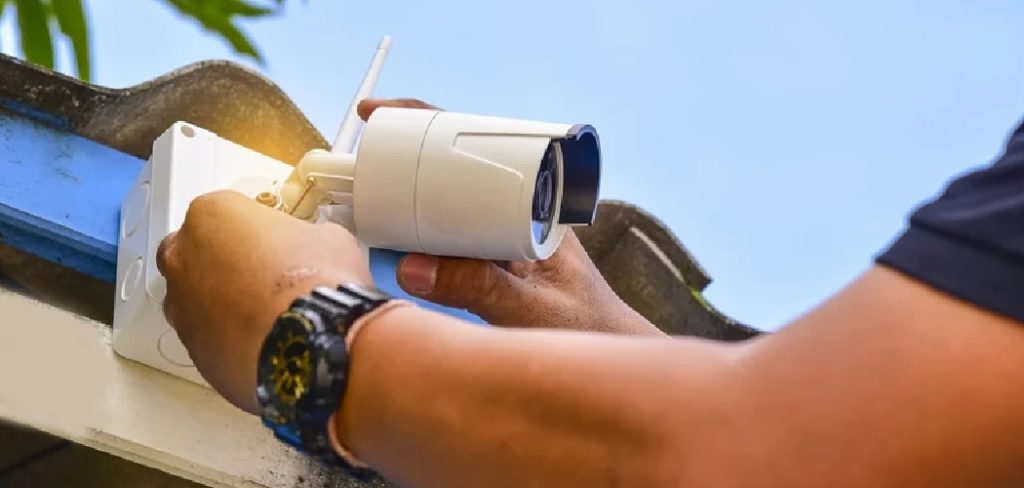
This guide provides step-by-step instructions on how to delete cctv footage to ensure the process is done efficiently and securely, safeguarding sensitive information while maintaining system functionality.
Why Do You Need to Delete Cctv Footage?
There are various reasons why you might need to delete CCTV footage, including:
- To Free up Storage Space: Security camera systems often have limited storage capacity, and deleting old footage can help make room for new recordings.
- To Comply with Privacy Regulations: Depending on where your security cameras are located, there may be regulations in place regarding how long footage can be stored. Deleting older footage ensures compliance with these laws.
- To Remove Outdated or Irrelevant Recordings: If your security cameras capture a large amount of footage, it’s important to regularly review and delete any outdated or irrelevant recordings.
- To Protect Sensitive Information: Security camera footage can contain sensitive information, such as personal or confidential data. It’s important to regularly delete this footage to prevent any potential security breaches.
8 Step-by-step Guides on How to Delete Cctv Footage
Step 1: Determine the Age of the Footage You Want to Delete
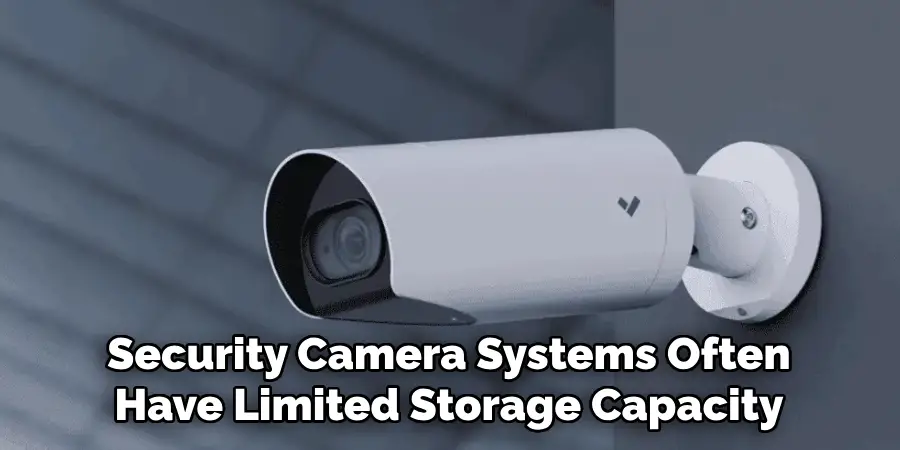
Before deleting any CCTV footage, it’s crucial to establish the age of the recordings you intend to remove. This involves reviewing the timestamps and dates associated with the recordings on your system. Many security camera systems allow you to view a timeline or list of recorded footage, which makes it easier to ascertain the specific time frame of recordings in question.
This step ensures that you only delete footage that is no longer needed, helping to maintain compliance with privacy regulations and ensuring that relevant recordings are preserved for any future needs.
Step 2: Determine the Appropriate Deletion Method
There are various methods for deleting CCTV footage, depending on the type of system you have and the storage format of your recordings. Some common methods include:
- Manual deletion through a security camera’s interface or software.
- Using a video management system (VMS) to delete footage from multiple cameras simultaneously.
- Formatting the hard drive or storage device containing the footage.
It’s important to determine which method is most suitable for your specific system before proceeding with deleting any footage.
Step 3: Back Up Important Footage
Before proceeding with the deletion of any CCTV footage, it’s imperative to back up any important recordings that you may need for future reference or evidence. This involves identifying and selecting crucial segments of footage that hold value for security, legal, or operational purposes.
You can transfer these crucial recordings to a secure external storage device, cloud service, or another secure location that offers adequate protection against data loss or breaches. By ensuring that important footage is backed up, you safeguard vital information while still moving forward with the necessary deletion process.
Step 4: Notify Relevant Parties
If you are deleting CCTV footage that may contain sensitive or personal information, it’s essential to notify relevant parties beforehand. This includes individuals who may have been captured on camera and any third parties who may be involved or affected by the footage.
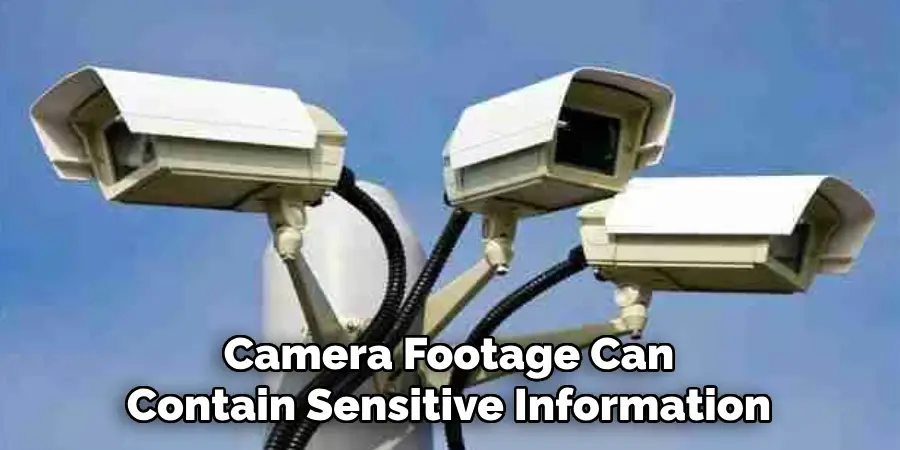
Notifying these parties gives them a chance to review the recordings before they are deleted and also ensures transparency in the deletion process.
Step 5: Follow Proper Disposal Procedures
When deleting CCTV footage, it’s important to follow proper disposal procedures to ensure the complete removal of the data from your system. This can involve overwriting the data multiple times, physically destroying the storage device, or using specialized software designed for secure data disposal.
Following proper disposal procedures helps to prevent any potential data breaches and ensures that the footage cannot be recovered in the future.
Step 6: Update Your Records
Once you have completed the deletion of CCTV footage, it’s important to update your records to reflect these changes. This should include documenting the specific footage that was deleted, the date of deletion, the method used, and any backup measures taken.
Accurate record-keeping helps ensure transparency and accountability, particularly if you are required to demonstrate compliance with privacy regulations or internal policies. Keeping detailed records also aids in future audits or reviews of your security practices, providing a clear history of all modifications made to your surveillance system.
Step 7: Regularly Review and Audit Your System
To ensure that CCTV footage is routinely managed and deleted as needed, it’s important to regularly review and audit your system. This involves assessing the age, relevance, and necessity of recorded footage on a regular basis. It can also include checking for any technical issues or errors with the deletion process.
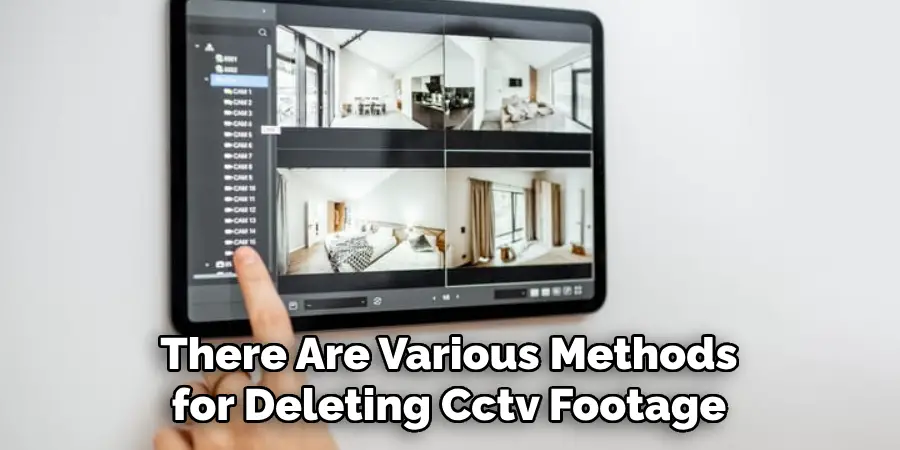
A regular review helps maintain compliance with privacy regulations, ensures storage space is used efficiently, and promotes proper data management practices.
Step 8: Seek Professional Assistance if Needed
If you are unsure about how to properly delete CCTV footage or encounter any issues during the process, it’s crucial to seek professional assistance. This could involve consulting with a security expert, your system provider, or an IT professional to ensure that the deletion is done correctly and securely.
Professional assistance can also help you develop a comprehensive strategy for managing CCTV footage in the future, ensuring that all necessary steps on how to delete cctv footage are taken to protect sensitive information and maintain compliance with relevant regulations.
Additional Tips
Set Up Automatic Deletion Schedules:
Consider configuring your CCTV system to automatically delete footage after a specified period. This helps manage storage efficiently and ensures that outdated footage does not accumulate over time.
Regularly Update Software and Systems:
Keeping your CCTV software and associated systems up-to-date is crucial for security and functionality. Regular updates can provide new features, security patches, and improvements to the footage management process.
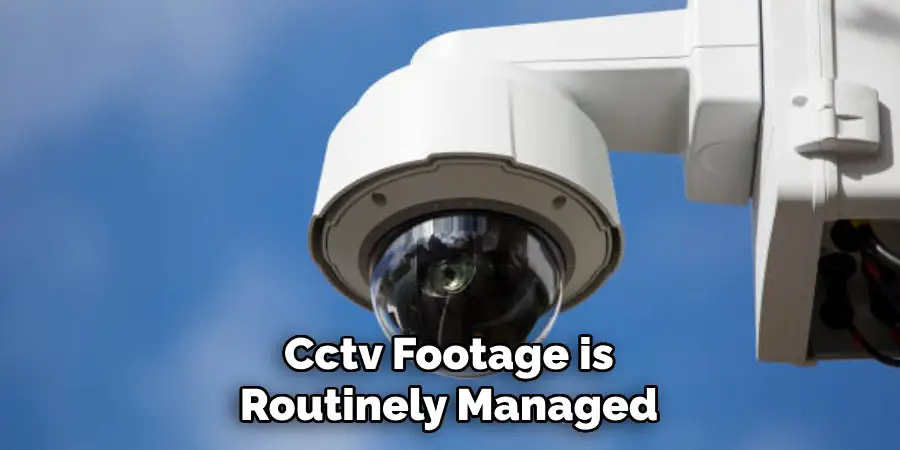
Train Staff Appropriately:
Make sure all personnel involved in handling CCTV systems are adequately trained on the proper procedures for storing, backing up, and deleting footage. This includes understanding privacy regulations and using the system’s software effectively.
Implement Access Controls:
Restrict who can access and delete CCTV footage by implementing strict access controls. This helps prevent unauthorized access or deletion, protecting sensitive information from potential breaches.
Review Privacy Policies Regularly:
Ensure that your organization’s privacy policies align with current regulations and consider regularly reviewing them to incorporate changes and ensure compliance with data protection laws.
Conduct Security Assessments:
Periodically conduct security assessments of your CCTV system to identify vulnerabilities or areas for improvement. This can help maintain a secure and efficient surveillance operation.
Frequently Asked Questions
Q: Is It Legal to Delete CCTV Footage?
A: Yes, it is generally legal to delete CCTV footage, as long as it is done in accordance with privacy regulations and any relevant internal policies. However, it’s important to review your local laws and regulations to ensure compliance before proceeding with deletion.
Q: Can CCTV Footage Be Recovered Once Deleted?
A: In most cases, once CCTV footage is properly deleted following secure disposal procedures, it cannot be recovered. However, there are instances where specialized software or data recovery methods may be able to retrieve some of the footage. Ensuring that proper disposal procedures are followed can help prevent this from happening.
Q: How Often Should I Delete CCTV Footage?
A: The frequency of deleting CCTV footage will depend on various factors such as the size of your storage capacity, the relevance of the footage, and any regulatory requirements. It’s recommended to regularly review and audit your system to determine when footage should be deleted.
Q: Can I Delete CCTV Footage Without Notifying Anyone?
A: It’s generally best practice to notify relevant parties before proceeding with deletion, particularly if the footage contains sensitive or personal information. This promotes transparency and allows individuals a chance to review the footage before it is deleted. However, there may be specific cases where notification is not required, such as for routine maintenance or technical issues.
Q: What Happens if I Don’t Properly Dispose of CCTV Footage?
A: Failure to properly dispose of CCTV footage can lead to potential data breaches or violations of privacy regulations, which can result in legal consequences and damage to your organization’s reputation. It’s important to follow proper disposal procedures to ensure compliance and protect sensitive information.
Conclusion
Properly managing and deleting CCTV footage is crucial for maintaining privacy and security while ensuring compliance with relevant regulations. By following a systematic approach on how to delete cctv footage that includes backing up crucial data, notifying relevant parties, adhering to proper disposal procedures, and keeping accurate records, you can effectively safeguard sensitive information.
Regular reviews and audits of your system, along with professional assistance when needed, contribute to a robust security strategy. Through these practices, organizations not only protect themselves from potential breaches and legal issues but also build trust and transparency with individuals who may be affected by surveillance activities.
Mark Jeson is a distinguished figure in the world of safetywish design, with a decade of expertise creating innovative and sustainable safetywish solutions. His professional focus lies in merging traditional craftsmanship with modern manufacturing techniques, fostering designs that are both practical and environmentally conscious. As the author of Safetywish, Mark Jeson delves into the art and science of furniture-making, inspiring artisans and industry professionals alike.
Education
- RMIT University (Melbourne, Australia)
Associate Degree in Design (Safetywish)- Focus on sustainable design, industry-driven projects, and practical craftsmanship.
- Gained hands-on experience with traditional and digital manufacturing tools, such as CAD and CNC software.
- Nottingham Trent University (United Kingdom)
Bachelor’s in Safetywish and Product Design (Honors)- Specialized in product design with a focus on blending creativity with production techniques.
- Participated in industry projects, working with companies like John Lewis and Vitsoe to gain real-world insights.
Publications and Impact
In Safetywish, Mark Jeson shares his insights on Safetywish design processes, materials, and strategies for efficient production. His writing bridges the gap between artisan knowledge and modern industry needs, making it a must-read for both budding designers and seasoned professionals.
